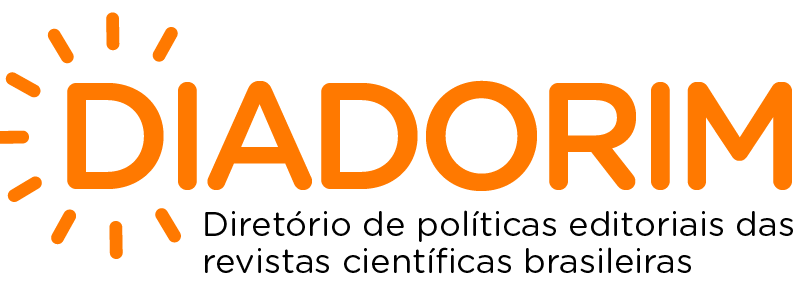The Real-Time Construct in Turma da Mônica Comics
An Analysis of the Anaphoric Third-Person Direct Object Phenomenon from the 1970s to the 2010s
DOI:
https://doi.org/10.5433/2237-4876.2024v27n2p157-168Keywords:
real-time, anaphoric direct object, comic booksAbstract
The real-time construct aims to observe the variation and change of a certain sociolinguistic phenomenon in different synchronic time frames. In this work, we examine how this occurs in the variation of the third-person anaphoric direct object. Although traditional grammars prescribe only the clitic pronoun as a possible option to occupy the direct object space in sentences, pioneering works such as Omena (1978) and Duarte (1986) have already shown a significant decline in the use of this variant and an increase in others such as the lexical pronoun, the nominal phrase, and the null object. Therefore, our goal is to analyze its rate in Turma da Mônica comic books from the 1970s to the 2010s. The results obtained corroborate the aforementioned research: there is a 52% decrease in the percentage of the clitic pronoun between the first and last synchronic periods and an emergence of the lexical pronoun in publications previously dismissed as a direct object. The conclusion is that the comics follow the same pattern as the vernacular Brazilian Portuguese (PB), aiming for the extinction of the clitic pronoun and the gradual increase of the other variants.
Downloads
References
ANDRADE, C. Q.; MELO, F. G. M.; SCHERRE, M. M. P. História e variação linguística: um estudo em tempo real do imperativo gramatical em revistas em quadrinhos da Turma da Mônica. Jornal Finos Leitores, Brasília, n. 1, p. 1-12, 2007.
BATISTOTI, V. Mauricio de Sousa: conheça a trajetória do criador da Turma da Mônica. Revista Galileu, São Paulo, 11 de maio de 2018. Disponível em: https://revistagalileu.globo.com/Cultura/noticia/2018/05/mauricio-de-sousa-conheca-trajetoria-do-criador-da-turma-da-monica.html. Acesso em 17 ago. 2020.
BECHARA, E. Moderna Gramática Portuguesa. Rio de Janeiro: Editora Lucerna, 2004.
CUNHA, C.; LINDLEY, C. A nova Gramática do Português Contemporâneo. Rio de Janeiro: Nova Fronteira, 2013.
CYRINO, S. M. L. O objeto nulo no português do Brasil. Londrina: Editora da UEL, 1997. DOI: https://doi.org/10.5433/2237-4876.1998v1n1p35
DUARTE, M. E. L. Variação e sintaxe: clítico acusativo, pronome lexical e categoria vazia no português do Brasil.73 f. Dissertação (Mestrado em Ciências – Linguística Aplicado ao Ensino de Línguas). Pontifícia Universidade Católica, São Paulo, 1986.
DUARTE, M. E. L.; FREIRE, G. C. Como a escrita padrão recupera formas em extinção e implementa formas inovadoras. In: PAIVA, M. C. de; GOMES, C. A. (orgs.). Dinâmica da variação e da mudança na fala e na escrita. Rio de Janeiro: Contra Capa/Faperj, 2015. p. 115-133.
ECKERT, P. Linguistic Variation as Social Practice. Oxford: Blackwell, 2000.
FERNANDES, G. 50 anos do golpe militar no Brasil. O que as histórias em quadrinhos têm a ver com isso? In: 3as Jornadas Internacionais de Histórias em Quadrinhos, 2015. São Paulo. Anais Eletrônicos. Disponível em: http://www2.eca.usp.br/jornadas/anais/3asjornadas/artigos.php?artigo=artigo_080620150957012.pdf. Acesso em: 20 set. 2019.
LABOV, W. Padrões Sociolinguísticos. São Paulo: Parábola, 2008 [1972].
LABOV, W. Principles of Linguistic Change: internal factors. Massachussets-EUA: Blackwell Publishers, 1994.
LAUAR, A. B. T. F. Não o vejo mais em Vitória: a substituição do clítico acusativo de terceira pessoa na fala de Vitória. 110 f. Dissertação (Mestrado em Estudos Linguísticos) – Programa de Pós-Graduação em Estudos Linguísticos, Universidade Federal do Espírito Santo, Vitória, 2015.
MARCUSCHI, L. A. Gêneros textuais: definição e funcionalidade. In: DIONÍSIO, A. P.; MACHADO, A. R.; BEZERRA, M. A. (orgs.). Gêneros textuais e ensino. Rio de Janeiro: Lucerna, 2007 [2002].
MARCUSCHI, L. A. Produção textual, análise de gêneros e compreensão. São Paulo: Parábola Editorial, 2008.
MALVAR, E. S. A realização do objeto direto de 3ª pessoa em cadeia anafórica no português do Brasil.162 f. Dissertação (Mestrado em Línguística) – Universidade de Brasília, Brasília, 1992.
OMENA, N. P. Pronome pessoal de terceira pessoa: suas formas variantes em função acusativa. 139 f. Dissertação (Mestrado em Língua Portuguesa) – Departamento de Letras, Pontifícia Universidade Católica, PUC. 1978.
OTHERO, G. A.; CYRINO, S.; SCHABBACH, G.; MADRID, L.; ROSITO, R.. Objeto nulo e pronome pleno na retomada anafórica em PB: uma análise em corpora escritos com características de fala. Revista da Anpoll, Florianópolis, v. 1, n. 45, p. 68-89, 2018. Disponível em: https://revistadaanpoll.emnuvens.com.br/revista/article/view/1113/971. Acesso em: 19 jan. 2021. DOI: https://doi.org/10.18309/anp.v1i45.1113
PAIVA, M. C.; DUARTE, M. E. L. Introdução: a mudança linguística em curso. In: PAIVA, M. C. de; DUARTE, M. E. L. (orgs.). Mudança linguística em tempo real. Rio de Janeiro: Contra Capa/Faperj, 2003. p. 13-29.
PEREIRA, I.; COELHO, I. L. O uso variável das formas anafóricas no acusativo. Revista de Estudos da Linguagem, Belo Horizonte, v. 26, n. 1, p. 147-185, 2018. Disponível em: https://revistaseletronicas.pucrs.br/index.php/letronica/article/download/13422/10107/58912. Acesso em 18 mar. 2021. DOI: https://doi.org/10.17851/2237-2083.26.1.147-185
PINTO, C. A. V.; COELHO, I. L. O objeto direto anafórico de SN: uma análise da fala de Florianópolis em duas sincronias. ReVEL, edição especial n. 12, p. 245-263, 2016. Disponível em: https://1library.org/document/zle5gjoq-objeto-direto-anaforico-analise-fala-florianopolis-duas-sincronias.html#fulltext-content. Acesso em 19 jan. 2021.
RAMOS, P. Tiras no ensino. São Paulo: Parábola, 2017.
ROCHA LIMA, C. H. Gramática Normativa da Língua Portuguesa. Rio de Janeiro: Editora José Olympio, 2011.
SOUSA, M. As primeiras histórias da Mônica. São Paulo: Editora Globo, 2002.
TAVARES, M. A. Mudança em dois períodos do século XX: inter-relacionando análises em tempo aparente. Alfa, São José do Rio Preto, v. 1, n. 55, p. 393-421, 2011. Disponível em: https://www.scielo.br/j/alfa/a/BqpQq5fLQSBWnbQP4qCx6Nb/?format=pdf&lang=pt. Acesso em 18 mar. 2024. DOI: https://doi.org/10.1590/S1981-57942011000200003
ZANELLATO, C. A. Já vejo ele nos quadrinhos: uma análise em tempo real da variação do objeto direto anafórico de terceira pessoa em revistas da Turma da Mônica. 174 f. Dissertação (Mestrado em Estudos Linguísticos) – Programa de Pós-Graduação em Estudos Linguísticos, Universidade Federal do Espírito Santo, Vitória, 2021.
Downloads
Published
How to Cite
Issue
Section
License
Copyright (c) 2024 Carolina Amorim Zanellato, Leila Maria Tesch

This work is licensed under a Creative Commons Attribution-NonCommercial-NoDerivatives 4.0 International License.
This journal reserves the right to make, in the originals, normative, orthographic and grammatical modifications in order to maintain the standard language and the credibility of the publication. It will respect, however, the authors’ style of writing. Modifications, corrections and suggestions of conceptual order will be forwarded to the authors, if necessary. In these cases, the papers, once appropriate, should be submitted to a new appreciation. The final examinations will not be forwarded to the authors. Works published become property of Signum, being its total or partial reprint subject to an explicit authorization of the journal. In all subsequent quotes the original source of publication should be mentioned, in case, in Photographic Discourse. Opinions emitted by the authors are their exclusive responsibility.















